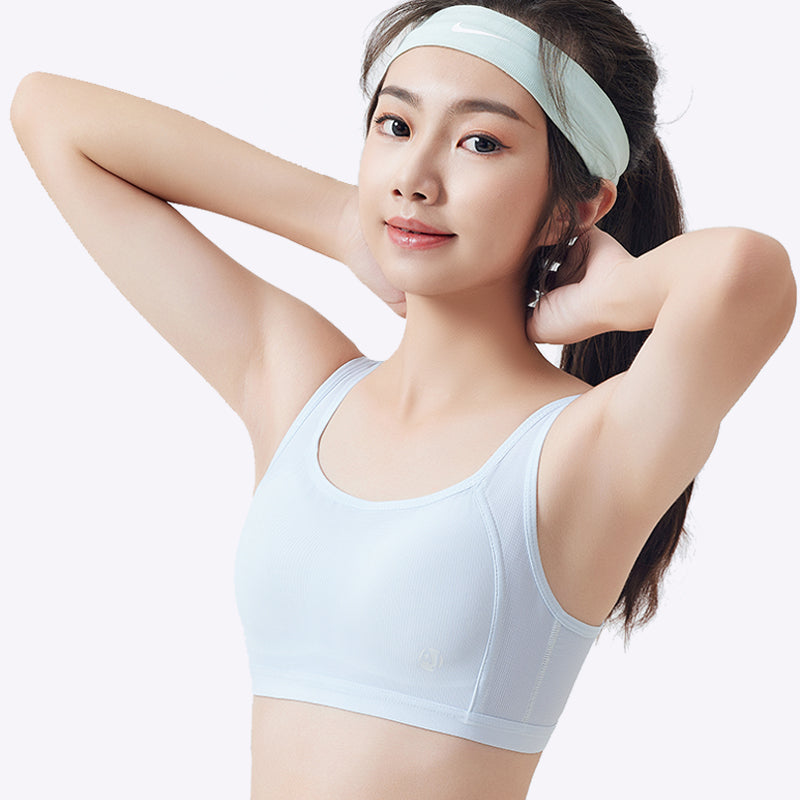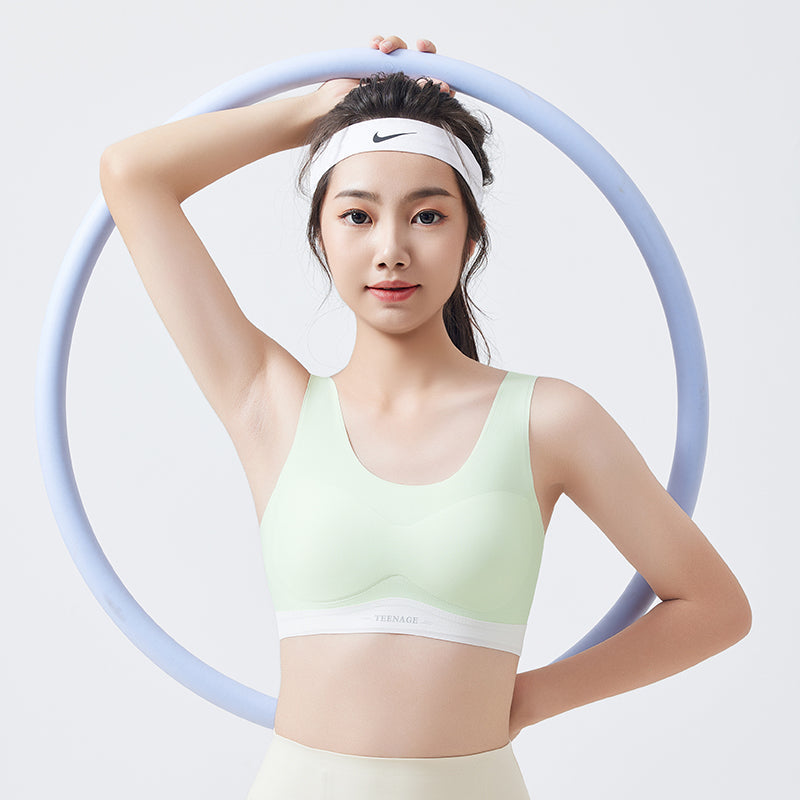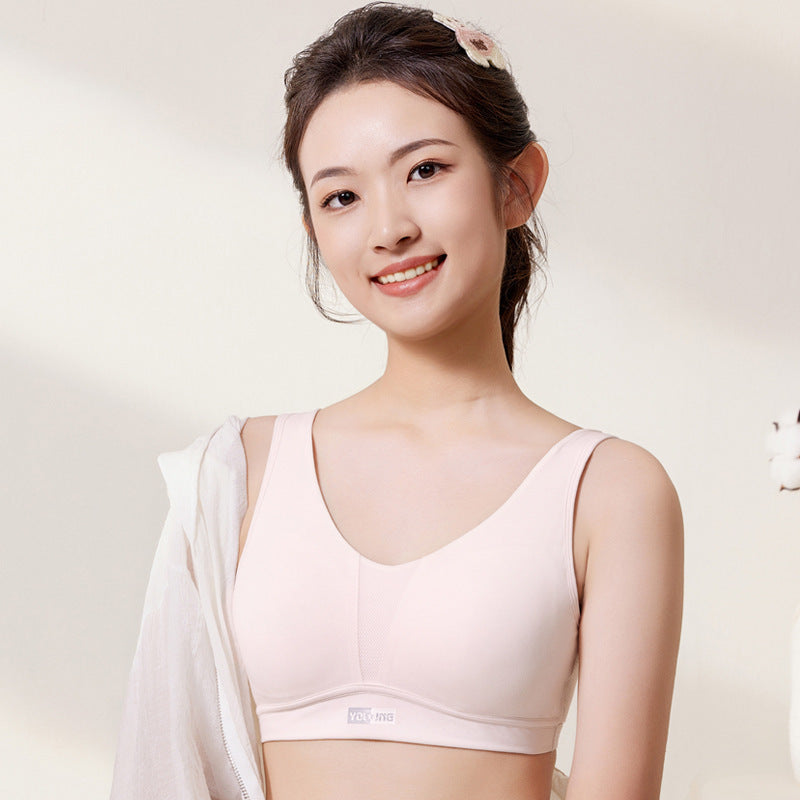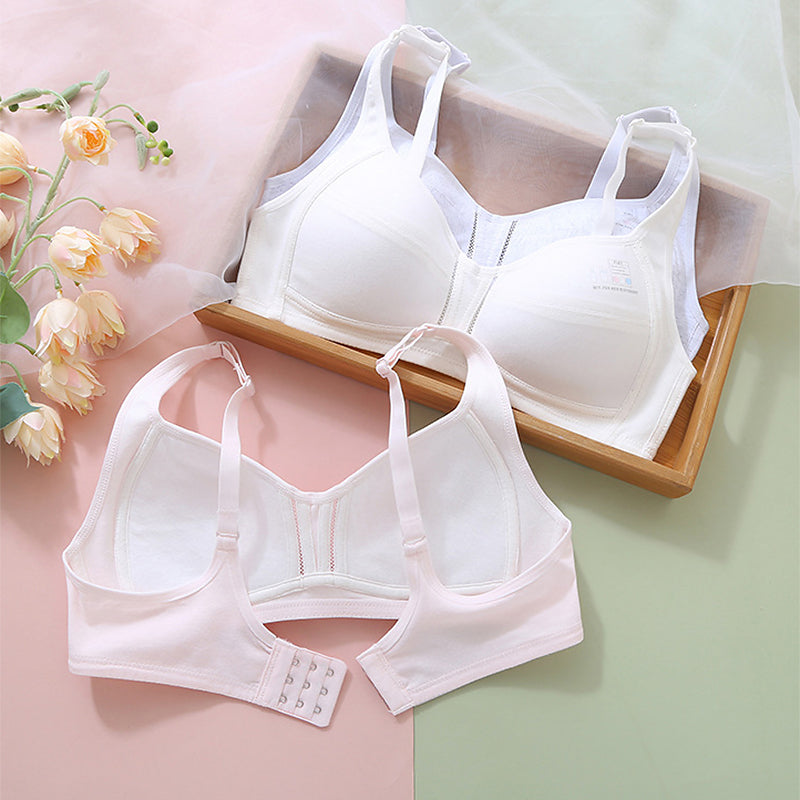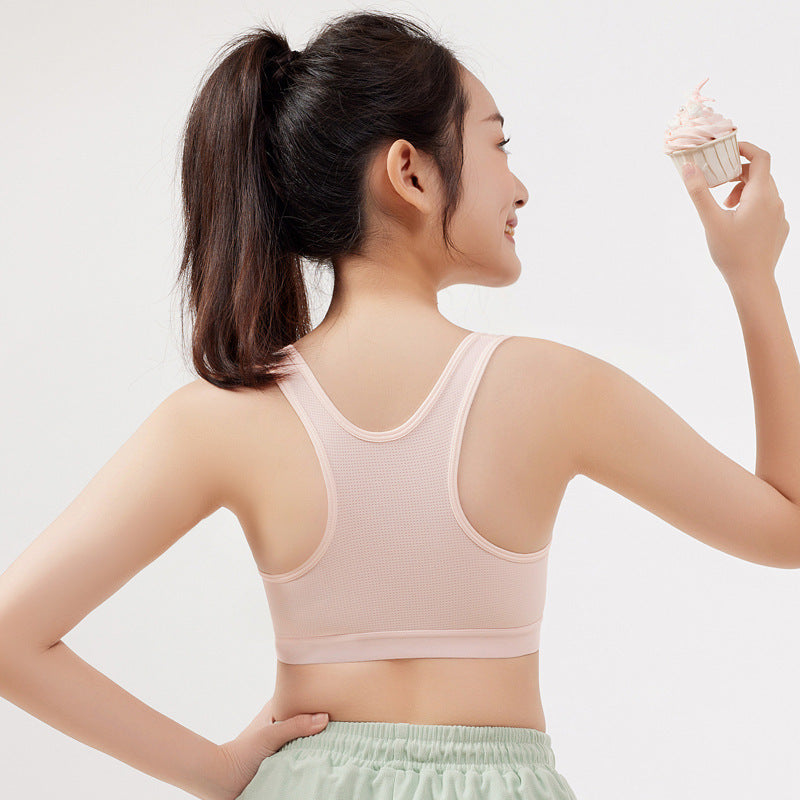How to Measure and Fit Her First Bra—Simply
The first bra should be simple, respectful, and comfortable—nothing complicated, nothing fussy. This guide walks you through how to measure at home with a soft tape, how to read our stage-based size charts, and how to choose a style she’ll actually want to wear. It’s written for families and for retailers who help families every day, so you can make confident, informed decisions without guesswork.
Why we use a stage-based sizing approach:
Every girl grows on her own timeline, which is why Melissa organizes the range by development stage rather than only by age. The three stages—First Bloom (Early Development), Growing Grace (Mid Development), and Confident Bloom (Late Development)—map typical needs from first-time wearers through more active daily routines. The age ranges on our charts are guidance, not rules; what matters most is comfort and how the garment feels during real movement.
How to measure at home (fast, friendly, and accurate):
You only need a soft measuring tape and two relaxed minutes.
1) Underbust (for bras and tops).
Wrap the tape around the ribcage directly under the bust. Keep it level, comfortably snug (not tight), and make sure she’s breathing normally with shoulders relaxed. Record the measurement in centimeters (you can note inches too if you prefer). This is the primary number used to select a band size in our charts.
2) Waist and hips (for bottoms/sets).
For bottoms or coordinated sets, measure the waist at the natural curve and the hips at the fullest part. These help with briefs, shorts, and active bottoms, and they’re referenced in our fit guidance.
Helpful tips
- Measure over a light layer or fitted tee, not a bulky sweatshirt.
- If you’re between two readings, round up for comfort and room to grow.
- Re-measure after a growth spurt, a new sports season, or if she mentions tightness.

Reading the Melissa size charts (what the numbers mean):
Our charts pair clear measurements with simple stage guidance, so you can choose quickly and correctly. Below is a plain-English tour of what you’ll see.
First Bloom (Early Development)
For new wearers who want ultra-light coverage and breathable comfort. Underbust bands run from the low-50s to the high-60s in centimeters—think approximately 50–68 cm across M, L, XL, 2XL, 3XL, with reference weight and age ranges to help you sanity-check your choice. The same chart provides inch conversions and approximate EU/US references so international families don’t need a calculator. Sizes are for guidance; fit and comfort come first.
Growing Grace (Mid Development)
For girls who need a touch more support while keeping everything flexible and soft. Underbust bands broaden to about 56–82 cm across M to 5XL, with supportive but gentle construction that works for school days, PE, and weekend play. You’ll also see the parallel chart in inches plus approximate EU/US references for quick cross-checking.
Confident Bloom (Late Development)
For older teens and late-stage development who may want slightly more structure without losing breathability. Underbust bands typically fall around 62–80 cm across M to 3XL, with inch conversions and EU/US references side-by-side. Again, use these as starting points and let comfort be the final word.
Across all stages, you’ll notice our charts present both cm and inches, plus simple EU/US reference markers. That’s on purpose—so families and retailers from different regions can read the same chart with confidence and land on the same recommendation.
Important note: these charts are guides. For precision on a specific item, check the detailed measurements on that product’s page, then use the tips below to confirm fit at home.
The “just-right” fit checklist:
Use this quick checklist once she’s tried the garment at home:
- Band feel: Should sit flat and comfortably around the ribcage. Not sliding up, not pinching.
- Front coverage: Smooth, easy coverage without gaping or excessive compression.
- Straps: Stay put on the shoulders after a few natural movements. Adjust equally on both sides.
- Movement test: Reach up, twist side-to-side, and take a few deep breaths. If she forgets she’s wearing it, you’ve nailed the fit.
- Skin comfort: No rubbing at seams or labels; breathable fabric keeps her cool in class and during play.
If anything feels off, use the troubleshooting below.
Common sizing scenarios (and quick fixes):
She’s between sizes on the chart.
Choose the larger band for comfort and re-check strap adjustment. A little growing room is better than a too-tight band.
The band feels snug by afternoon.
Bodies change through the day. If the morning fit becomes tight later, move up one band size or try a style with a slightly softer, wider band.
The straps slip during sports.
Tighten incrementally (both sides evenly). If they still slip, consider a cut with closer strap placement or a stage with a touch more hold.
She has sensitive skin.
Opt for our softest finishes and breathable, light-touch styles. Wash on gentle and air-dry to preserve fabric hand-feel.
She wants more support for PE.
Stay in the same stage but move to a style with a slightly firmer band—or consider whether she’s ready to step from First Bloom to Growing Grace for sports days.

Choosing between stages (how to think about it):
Stages are there to simplify—not to box anyone in. As a rule of thumb:
- If she’s brand new to underwear, start with First Bloom for the lightest, least intrusive feel.
- If she’s active most days, Growing Grace often provides a more stay-put feel while remaining soft.
- If she’s older or prefers a bit more structure, Confident Bloom balances smooth lines with breathable stability.
The charts include age ranges as a reference point, but the best indicator is how she feels during real life: sitting through classes, running at PE, and relaxing on weekends.
Practical examples:
Example A: New to first bras, uniform-heavy week
You measure 54 cm underbust. She wants coverage under a school polo, but no “squeeze.” Start at First Bloom, size that corresponds to the 50–56 cm band range. If the band is perfect but she wants steadier straps for PE, try the next style within the same stage.
Example B: Plays after school, lots of movement
You measure 66 cm underbust. She finds ultra-light styles comfy but wants less adjusting while running. Try Growing Grace in the matching band. If she still adjusts, a slightly wider band or a racer-friendly cut can help.
Example C: Older teen, prefers structure for long days
You measure 74 cm underbust. She likes a smooth, more “finished” feel under fitted tops. Confident Bloom in the nearest band size will likely feel best, while still staying breathable.
Care and longevity (so the fit you love sticks around):
- Wash routine: Hand wash or machine wash on gentle in a mesh bag.
- Detergent: Mild only; avoid bleach and fabric softener (they can break down elastic).
- Drying: Lay flat or hang to dry—skip the dryer for the softest long-term feel.
- Storage: Don’t crush bands; give them room so the elastic recovers fully.
A simple routine keeps softness, shape, and breathability at their best.
When to re-measure (and why it matters):
- Growth spurts: If she mentions tightness, marks on the skin, or mid-day pressure, re-measure the underbust.
- New activities: Starting a sport or changing routines can influence preferred support levels.
- Seasonal checks: Bodies change across the year; a quick tape measure check makes sure comfort stays front-and-center.
Remember, charts are a guide; for the most precise fit on a specific item, check the measurements on that product page before you buy.
Frequently asked questions:
Do I need all three measurements?
For bras, underbust is the key number. For bottoms/sets, waist and hips help refine the choice. Our Sizing page explains the full approach and how to measure each point at home.
Can I use inches instead of centimeters?
Yes. Our charts display cm and inches side by side, plus simple EU/US reference markers. Use whichever unit you’re comfortable with; the result points to the same size.
What if she’s between sizes?
Go with the larger band for comfort and adjust straps evenly. If she prefers a snugger feel during sport, try a style within the same stage with a slightly firmer band.
How do I know if a stage is right?
Use the stage descriptions and charts as a starting point, then let her comfort during real activities make the final call. If she’s brand new, start at First Bloom; if she’s very active, try Growing Grace; if she prefers more structure, try Confident Bloom.
Do the charts match every single product?
They’re designed as a brand-level guide. For the highest precision, always cross-check the specific product measurements on the item page—sizes are provided for reference to help you choose confidently.
Ready to choose?
- Open the Size & Fit Guide to see the full charts in cm and inches.
- Measure with our checklist, then match the band to the correct stage.
- Still unsure? Our customer support team is happy to help you land the perfect fit.
Explore the live Sizing page for stage-by-stage charts, unit conversions, and the product-page precision notes that help you finalize with confidence. If you can’t find what you need, contact us—we’re here to help.


